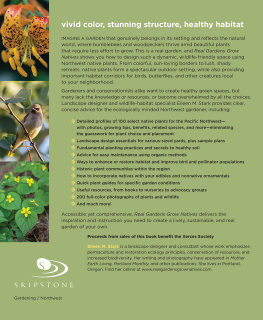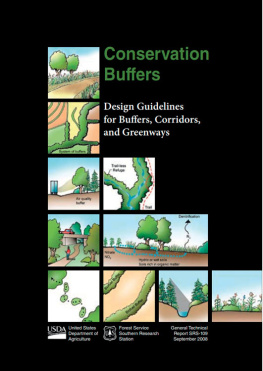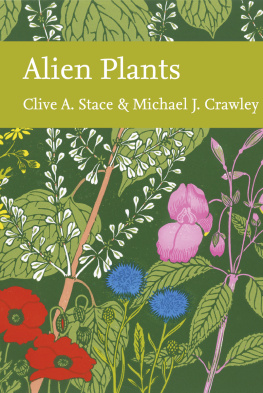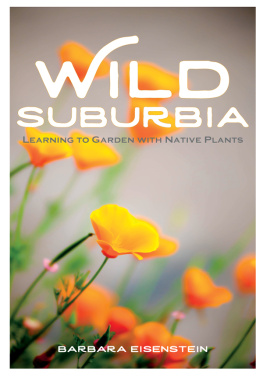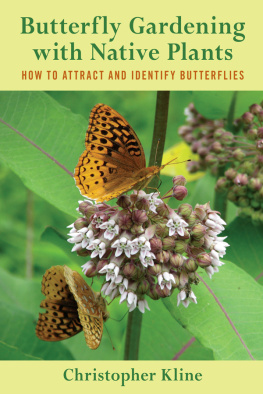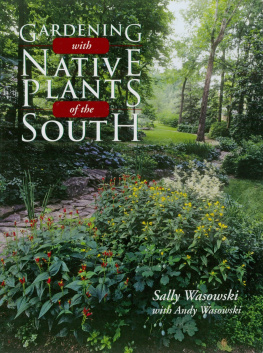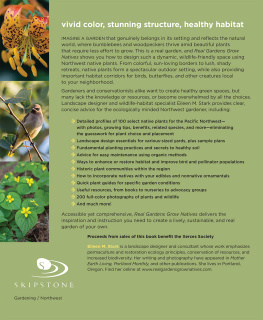Praise for Bringing Nature Home
Reading this book will give you a new appreciation of the natural worldand how much wild creatures need gardens that mimic the disappearing wild.
The Minneapolis Star Tribune
An informative and engaging account of the ecological interactions between plants and wildlife, this fascinating handbook explains why exotic plants can hinder and confuse native creatures, from birds and bees to larger fauna.
Seattle Post-Intelligencer
A fascinating study of the trees, shrubs, and vines that feed the insects, birds, and other animals in the suburban garden.
The New York Times
Provides the rationale behind the use of native plants, a concept that has rapidly been gaining momentum.... The text makes a case for native plants and animals in a compelling and complete fashion.
The Washington Post
Tallamy explains eloquently how native plant species depend on native wildlife.
San Luis Obispo Tribune
[Bringing Nature Home] will persuade all of us to take a look at what is in our own yards with an eye to how we, too, can make a difference. It has already changed me.
Traverse City Record-Eagle
[Bringing Nature Home] delivers an important message for all gardeners: Choosing native plants fortifies birds and other wildlife and protects them from extinction.
WildBird magazine
A compelling argument for the use of native plants in gardens and landscapes.
Landscape Architecture
An essential guide for anyone interested in increasing biodiversity in the garden.
American Gardener

A mockingbird surveys his territory, making sure no other birds are eating the insects it contains.
Bringing Nature Home
HOW YOU CAN SUSTAIN WILDLIFE WITH NATIVE PLANTS
UPDATED AND EXPANDED
DOUGLAS W. TALLAMY
Foreword by Rick Darke
TIMBER PRESS
Portland London
Mention of trademark, proprietary product, or vendor does not constitute a guarantee or warranty of the product by the publisher or author and does not imply its approval to the exclusion of other products or vendors.
Copyright 2007 by Douglas W. Tallamy. All rights reserved.
Photographs are by the author unless otherwise credited.
The Haseltine Building
133 S.W. Second Avenue, Suite 450, Portland, Oregon 97204-3527
www.timberpress.com
2 The Quadrant, 135 Salusbury Road
London NW6 6RJ
www.timberpress.co.uk
eISBN: 9781604691467
The Library of Congress Cataloging-in-Publication Data is available.
A catalog record for this book is also available from the British Library.
CONTENTS
FOREWORD
Once in a long while a book appears that fundamentally changes the way we think about our gardens and their role in the larger landscape. Provocative and powerfully persuasive, Doug Tallamys Bringing Nature Home accomplishes this with grace and humor, blending solid ecological science and human social science to outline a modern recipe for inclusive habitat. Tallamy recognizes the changing dynamics of our world and suggests how individual gardeners, collectively, can protect and conserve the local biological diversity that is truly vital and irreplaceable.
Bringing Nature Home is a book many of us have been waiting for. So much more than a push for native plants, it articulates the broad interdependency of living relationships and literally redefines gardens as the new Nature. Tallamy tackles the potentially grim subjects of habitat destruction and resultant species loss and turns them into inspiring stories full of hope and opportunity. Drawing on a lifetime of experience as naturalist and observer, scientist and gardener Doug Tallamy writes with real familiarity about the sensory richness, vibrancy, and sustenance inherent in landscapes that are truly full of life.
Rich in concept and detail, this book asks and answers essential questions for modern gardeners inclined to good stewardship. How can we adjust our planting palette to be both beautiful and environmentally useful? How much more does a local oak species contribute to habitat richness than an out-of-ecological-context exotic tree? What do violets and fritillary butterflies, or pawpaws and zebra swallowtails have in common? Where might tomorrows species come from? Spending some time with Bringing Nature Home and its wealth of revelatory moments is certain to enrich your understanding of how connected and contributing good gardens can be.
Rick Darke
PREFACE
Occasionally we encounter a concept so obvious and intuitive that we have never thought to articulate it, so close to our noses that we could not see it, so entangled with our everyday experiences that we did not recognize it. In this book, I address several such concepts. Primarily, the wild creatures we enjoy and would like to have in our lives will not be here in the future if we take away their food and the places they live. I examine how we threaten their survival by trading our wild lands for uncontrolled expansion. And I emphasize the obvious consequence of that trade: in too many areas of our country there is no place left for wildlife but in the landscapes and gardens we ourselves create.
I also introduce ideas that are perhaps not so obvious. All plants are not created equal, particularly in their ability to support wildlife. Most of our native plant-eaters are not able to eat alien plants, and we are replacing native plants with alien species at an alarming rate, especially in the suburban gardens on which our wildlife increasingly depends. My central message is that unless we restore native plants to our suburban ecosystems, the future of biodiversity in the United States is dim.
Fortunately, two points of optimism temper this gloomy prediction. First and foremost, it is not yet too late to save most of the plants and animals that sustain the ecosystems on which we ourselves depend. Second, restoring native plants to most human-dominated landscapes is relatively easy to do.
Although I do suggest approaches here and there, this is not a how-to book; there are many other fine references on how to select and grow natives in different parts of the country. Nor is this a book about landscaping per se. I am not posing as a landscape architect, and I am not skilled in landscape design. I am simply proposing a justification for the liberal use of native plants in the landscape that has not yet been clearly articulated. I hope the reasoning presented in this book is logical and convincing, and maybe even entertaining.
I would like to thank my wife, Cindy, for keeping me on course in this and all other endeavors, as well as for her exceptional editorial skills and willingness to turn our property into a research station. For ideas, factual accuracy, advice, encouragement, and technical help, I also thank Tina Alban, Mary Ann Brown, Ed Bruno, Rick Darke, Vince DAmico, Dale Hendricks, Bethany Plyler, Dot Plyler, and Jim Plyler, Kimberley Shropshire, Melinda Zoehrer, and all those Ive met at conferences whose interest in these ideas has been my constant motivation.
CHAPTER ONE

Restoring Natives to Suburbia: A Call to Action
Gardeners enjoy their hobby for many reasons: a love of plants and nature, the satisfaction that comes from beautifying home and community, the pleasures of creative effort, the desire to collect rare or unusual species, and the healthful benefits of exercise and outdoor air. For some people, like my wife and me, there is pleasure in just watching plants grow.


